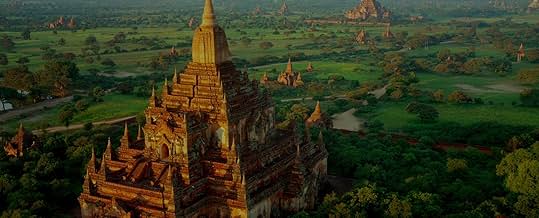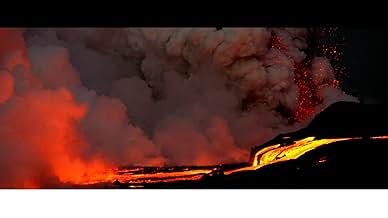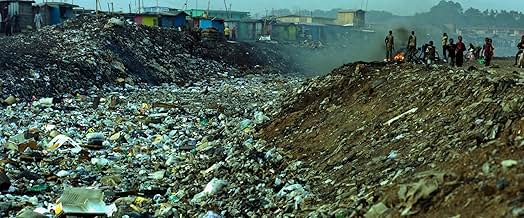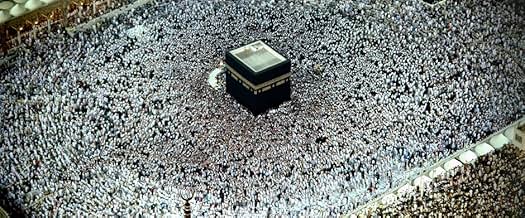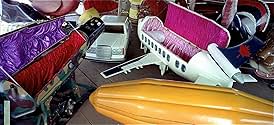CALIFICACIÓN DE IMDb
8.4/10
39 k
TU CALIFICACIÓN
Rodada durante casi cinco años en veinticinco países de los cinco continentes, nos transporta a los variados mundos de las tierras sagradas, las zonas de desastre, los complejos industriales... Leer todoRodada durante casi cinco años en veinticinco países de los cinco continentes, nos transporta a los variados mundos de las tierras sagradas, las zonas de desastre, los complejos industriales y las maravillas naturales.Rodada durante casi cinco años en veinticinco países de los cinco continentes, nos transporta a los variados mundos de las tierras sagradas, las zonas de desastre, los complejos industriales y las maravillas naturales.
- Dirección
- Guionistas
- Elenco
- Premios
- 1 premio ganado y 6 nominaciones en total
Hiroshi Ishiguro
- Professor and Robot Clone: Japan
- (as Prof. Hiroshi Ishiguro)
Robert Henline
- U>S> Army Veteran: USA
- (as Staff Sergeant Robert Henline)
Tai Lihua
- Lead Dancer: 1000 Habds Goddess Dance, China
- (as Iai Lihua)
Collin Alfredo St. Dic
- Self
- (as Collin St. Dic)
- …
- Dirección
- Guionistas
- Todo el elenco y el equipo
- Producción, taquilla y más en IMDbPro
Opiniones destacadas
Brilliant, but difficult to explain why. No plot, no acting (well, except for one scene, but I'll come to that). So, it's a documentary then? Yes, sort of, but there is no narration, nor captions, nor even tags to let you know what or where in the world you are looking at.
In essence, it's a visual documentary on the modern world. Initially it just seems like National Geographic without any commentary: beautiful scenes of temples, nature and places you might want to go as a tourist. However, 100 minutes of random places and things could be boring after a while. Just when you start to think that might well be the case, themes start to emerge: nature, buildings, opulence vs poverty, guns/military, livestock. Pretty much everyday things, and how they are connected.
It is basically a 100-minute stream-of-consciousness exercise, using amazing, totally natural visual imagery (ie no CGI). Enjoy it for where it takes your mind, or just for the images and the drama of everyday life.
Only negative note is the one scene that isn't candid: a performance artist. Very pretentious and pointless and prevents this movie from being perfect.
In essence, it's a visual documentary on the modern world. Initially it just seems like National Geographic without any commentary: beautiful scenes of temples, nature and places you might want to go as a tourist. However, 100 minutes of random places and things could be boring after a while. Just when you start to think that might well be the case, themes start to emerge: nature, buildings, opulence vs poverty, guns/military, livestock. Pretty much everyday things, and how they are connected.
It is basically a 100-minute stream-of-consciousness exercise, using amazing, totally natural visual imagery (ie no CGI). Enjoy it for where it takes your mind, or just for the images and the drama of everyday life.
Only negative note is the one scene that isn't candid: a performance artist. Very pretentious and pointless and prevents this movie from being perfect.
I came across the trailer for Samsara having never heard anything about it before, or the filmmakers involved, but the trailer alone made me want to check it out. I got to see it in IMAX and I'm glad I did as, as everyone else has said, visually it is stunning, so the bigger the screen you can see it on the better.
I have never seen Fricke's previous work such as Baraka so I had no idea what to truly expect when I sat down before it started. I see people have mentioned they got bored after 30 minutes due to the lack of dialog/narration and that overall it's too long but I couldn't disagree more. From the first scene to last, I was totally engrossed in the visual and audio experience. The juxtaposition of concepts and themes worked, I got to see places and activities I didn't know about in a way I have never seen before. The soundtrack is spot on, capturing and switching the moods perfectly. It moves you.
I see critics have said that the message of Samsara isn't clear but I don't think it needs a message. Seeing Samsara has enhanced my understanding, and appreciation for, the way our world is and works, and what really matters most to us. How many times can you go to the cinema and come out a more knowledgeable person?
Samsara is quite simply a work of art and, like all great art, you interpret it in your own individual way and it makes you think. Do yourself a favor and experience it.
I have never seen Fricke's previous work such as Baraka so I had no idea what to truly expect when I sat down before it started. I see people have mentioned they got bored after 30 minutes due to the lack of dialog/narration and that overall it's too long but I couldn't disagree more. From the first scene to last, I was totally engrossed in the visual and audio experience. The juxtaposition of concepts and themes worked, I got to see places and activities I didn't know about in a way I have never seen before. The soundtrack is spot on, capturing and switching the moods perfectly. It moves you.
I see critics have said that the message of Samsara isn't clear but I don't think it needs a message. Seeing Samsara has enhanced my understanding, and appreciation for, the way our world is and works, and what really matters most to us. How many times can you go to the cinema and come out a more knowledgeable person?
Samsara is quite simply a work of art and, like all great art, you interpret it in your own individual way and it makes you think. Do yourself a favor and experience it.
This Film captures exactly the great practical joke that is the Human condition. There is just enough beauty to hold the ugliness in check. Life offers an enormous amount of unnecessary suffering and despair only to keep depression at bay with doses of beauty and charity and sacrifice.
Watching this enormously engrossing visual landscape the heart is both warmed and broken. The extremely insensitive and uncompromising modernity, all destined to disintegrate into the sands of time.
The Film lays out the beautiful coating of our Planet, but its underbelly is a constant and bizarre barrage of destruction and decay, some natural, some not so. It is a superficial existence with a lush and plush feeling, but also with a nagging reminder that things can get really ugly really fast.
This can be a hard watch, at times, and that is ironic because of some of the sumptuous images. However, it truly and without apology, offers those breathtaking portrayals along with the other side. That offensive, disturbing, and unattractive side. It seems to say, it's a colorful cruel joke this here Life, and the Filmmaker is in on it.
Watching this enormously engrossing visual landscape the heart is both warmed and broken. The extremely insensitive and uncompromising modernity, all destined to disintegrate into the sands of time.
The Film lays out the beautiful coating of our Planet, but its underbelly is a constant and bizarre barrage of destruction and decay, some natural, some not so. It is a superficial existence with a lush and plush feeling, but also with a nagging reminder that things can get really ugly really fast.
This can be a hard watch, at times, and that is ironic because of some of the sumptuous images. However, it truly and without apology, offers those breathtaking portrayals along with the other side. That offensive, disturbing, and unattractive side. It seems to say, it's a colorful cruel joke this here Life, and the Filmmaker is in on it.
Samsara is a depressingly accurate account of shallow human materialism, the widespread ungratefulness of our culture, and the incredible arrogance we continue to proudly possess. It features images too powerful to be computer generated and humanity too sincere to be fiction. Even though not a word is spoken, the film's images pack well over a thousand words, making Samsara, hypothetically, the longest work of poetry ever written.
The film chronicles the living conditions, the activities, and the day-to-day routines of many different people across twenty-five different countries. We never do get a true answer where we are at, which works as a method by the filmmakers, I assume, to prevent assumptions and judgments on the places and the people. We are shown many things in these evocative, unforgettable one-hundred minutes, and more depth and enigma than many will experience in their lifetime.
Shots are presented in crystal clear 70mm (if you're lucky enough to find a theater with the proper projector, but regular theater projectors should work efficiently enough), and we get a beautiful look at life in the slums, life in mansions placed delicately on the coastlines, and living conditions in countries such as Ethiopia and the United States. We see early religious rituals carried out, such as Tibetan monks engaged in their prayers or youthful baptisms, as well as contrasting lifestyles that involve dance mobs, suffering, and habitat destruction.
Director Ron Ficke's imagery and global cinematography is gripping and astounding, with long shots centered on characters, groups of people, or sometimes, aerial shots that feature a wide coverage of the surrounding land. My favorites are easily the time lapse sequences, sped up to breakneck speeds, sometimes showing haunting images of uncertainty or simply the fast paced nature of our world.
There are two sequences in particular that are the most haunting, and describing them will be no easy task. One involves a man sitting behind a desk, who begins to smear modeling clay on his face, before grabbing a tiny paint brush and stroking black and red paint all over himself as well. He begins to vigorously do both things at once, ripping clay off his face only to smear it back on, throw dust in his eyes, stick pencils in his face, etc. The long-shot becomes faster and faster, while jolting music plays in the background. The scene alone is more horrifying and surreal than anything I've seen in 2012, with the exception of Battle Royale.
The other lasts about five or six minutes, involving a barn full of chickens helplessly being sucked into a large, ominous tractor that will kill them and prepare them for tomorrow's meal. From birth to death, they live their entire life in fear and darkness, barely being able to move due to their heavy breasts and increasing plumpness. We too get a look at pot belly pigs, also too heavy to move, as they lay still and allow their piglets to drink milk from their nipples. We then see those same baby pigs hanging from a long line in the air at a condensed factory, being prepared into the bacon you will eat tomorrow for breakfast.
These images are nonetheless painful, but it all resorts back to what I called Samsara in the first paragraph - depressingly accurate, more haunting than fiction, and silently nudging us when we're left agape, saying, "hey, we're to thank for this." And we are. One of the final shots involves a beautiful mural of tiny colored specs being swept away in seconds by men brushing the table it is on. We are stunned that such a beautiful thing would be carelessly wiped away, but it all returns back to the idea that we were too given a beautiful slice of life and the world and we took it for granted and nearly destroyed it. We weren't able to take a second look.
Fricke paints Samsara, which is Sanskrit for "the ever turning wheel of life," as a film that sometimes can laud human activity and then turn around and condemn it. It is predominately a loose picture, that wants you to search for meaning in its images, but unlike Jean-Luc Godard's Film Socialisme, a horrible exercise in a similar field, we can see the images represent something and there's enough ambiguity that we are able to extract many different messages from the source material and are able to provide sufficient evidence to back up our claims. To put it simply, this is one of the best, most intellectually stimulating films of the last ten years.
Directed by: Ron Fricke.
The film chronicles the living conditions, the activities, and the day-to-day routines of many different people across twenty-five different countries. We never do get a true answer where we are at, which works as a method by the filmmakers, I assume, to prevent assumptions and judgments on the places and the people. We are shown many things in these evocative, unforgettable one-hundred minutes, and more depth and enigma than many will experience in their lifetime.
Shots are presented in crystal clear 70mm (if you're lucky enough to find a theater with the proper projector, but regular theater projectors should work efficiently enough), and we get a beautiful look at life in the slums, life in mansions placed delicately on the coastlines, and living conditions in countries such as Ethiopia and the United States. We see early religious rituals carried out, such as Tibetan monks engaged in their prayers or youthful baptisms, as well as contrasting lifestyles that involve dance mobs, suffering, and habitat destruction.
Director Ron Ficke's imagery and global cinematography is gripping and astounding, with long shots centered on characters, groups of people, or sometimes, aerial shots that feature a wide coverage of the surrounding land. My favorites are easily the time lapse sequences, sped up to breakneck speeds, sometimes showing haunting images of uncertainty or simply the fast paced nature of our world.
There are two sequences in particular that are the most haunting, and describing them will be no easy task. One involves a man sitting behind a desk, who begins to smear modeling clay on his face, before grabbing a tiny paint brush and stroking black and red paint all over himself as well. He begins to vigorously do both things at once, ripping clay off his face only to smear it back on, throw dust in his eyes, stick pencils in his face, etc. The long-shot becomes faster and faster, while jolting music plays in the background. The scene alone is more horrifying and surreal than anything I've seen in 2012, with the exception of Battle Royale.
The other lasts about five or six minutes, involving a barn full of chickens helplessly being sucked into a large, ominous tractor that will kill them and prepare them for tomorrow's meal. From birth to death, they live their entire life in fear and darkness, barely being able to move due to their heavy breasts and increasing plumpness. We too get a look at pot belly pigs, also too heavy to move, as they lay still and allow their piglets to drink milk from their nipples. We then see those same baby pigs hanging from a long line in the air at a condensed factory, being prepared into the bacon you will eat tomorrow for breakfast.
These images are nonetheless painful, but it all resorts back to what I called Samsara in the first paragraph - depressingly accurate, more haunting than fiction, and silently nudging us when we're left agape, saying, "hey, we're to thank for this." And we are. One of the final shots involves a beautiful mural of tiny colored specs being swept away in seconds by men brushing the table it is on. We are stunned that such a beautiful thing would be carelessly wiped away, but it all returns back to the idea that we were too given a beautiful slice of life and the world and we took it for granted and nearly destroyed it. We weren't able to take a second look.
Fricke paints Samsara, which is Sanskrit for "the ever turning wheel of life," as a film that sometimes can laud human activity and then turn around and condemn it. It is predominately a loose picture, that wants you to search for meaning in its images, but unlike Jean-Luc Godard's Film Socialisme, a horrible exercise in a similar field, we can see the images represent something and there's enough ambiguity that we are able to extract many different messages from the source material and are able to provide sufficient evidence to back up our claims. To put it simply, this is one of the best, most intellectually stimulating films of the last ten years.
Directed by: Ron Fricke.
This film has tremendous power, not just from camera technique, but from the simple device of a human face steadily gazing at you. Time and time again humanity intrudes its collective face on you as life plays out across the Earth. Acceleration contrasts with contemplation; Earth rhythms overshadow human activity; no one seems to notice.
Samsara is beautiful, bizarre, and unforgettable. As the film progressed, my convictions as to what is 'for real' began to weaken. We may really be stuck in the same dream state. And always someone 'sees' back at you. Or is Samsara 'only a movie'?
This is not to say there is one correct way to experience or interpret Samara. Your reaction will reflect you only. At times uncomfortable, viewing Samsara is an experience worth having.
Samsara is beautiful, bizarre, and unforgettable. As the film progressed, my convictions as to what is 'for real' began to weaken. We may really be stuck in the same dream state. And always someone 'sees' back at you. Or is Samsara 'only a movie'?
This is not to say there is one correct way to experience or interpret Samara. Your reaction will reflect you only. At times uncomfortable, viewing Samsara is an experience worth having.
¿Sabías que…?
- TriviaFor several years the filmmakers attempted to secure permission to film in North Korea, but were ultimately denied access.
- ConexionesFeatured in Lucy (2014)
- Bandas sonorasBali Dance
and "1000 Hands"
Based on "Omaha Clear Skies"
From the CD "Star Songs" © 2010
By Bonnie Jo Hunt & Ron Sunsinger
Bonnie Jo Productions & Sunsinger Productions
Selecciones populares
Inicia sesión para calificar y agrega a la lista de videos para obtener recomendaciones personalizadas
- How long is Samsara?Con tecnología de Alexa
Detalles
- Fecha de lanzamiento
- Países de origen
- Sitios oficiales
- Idioma
- También se conoce como
- Luân Hồi
- Locaciones de filmación
- Productoras
- Ver más créditos de la compañía en IMDbPro
Taquilla
- Presupuesto
- USD 4,000,000 (estimado)
- Total en EE. UU. y Canadá
- USD 2,672,413
- Fin de semana de estreno en EE. UU. y Canadá
- USD 76,222
- 26 ago 2012
- Total a nivel mundial
- USD 4,426,444
- Tiempo de ejecución
- 1h 42min(102 min)
- Color
- Mezcla de sonido
- Relación de aspecto
- 2.39 : 1
Contribuir a esta página
Sugiere una edición o agrega el contenido que falta




